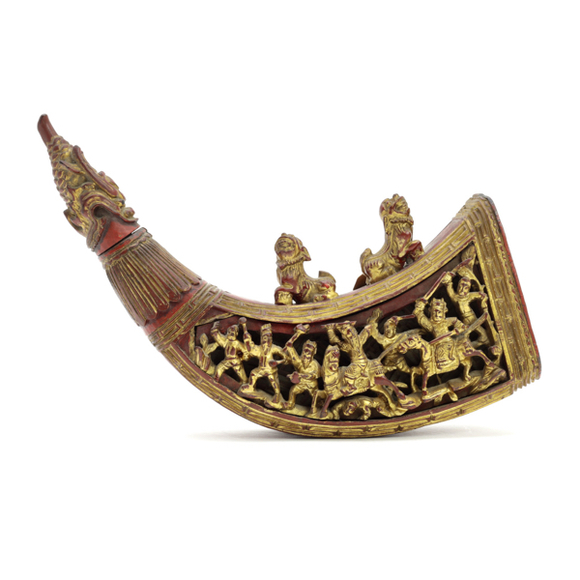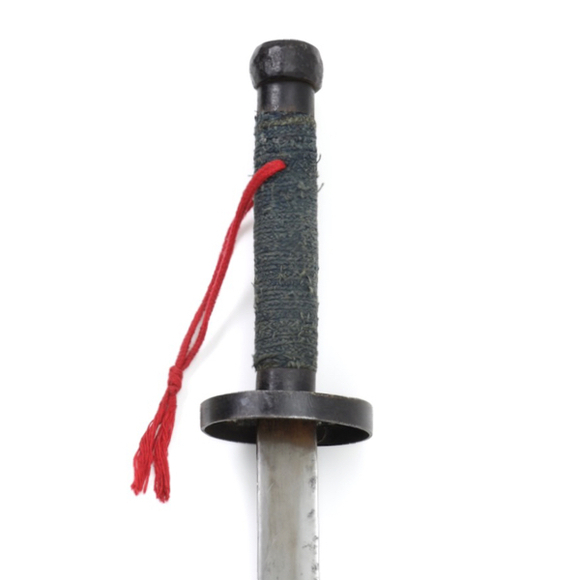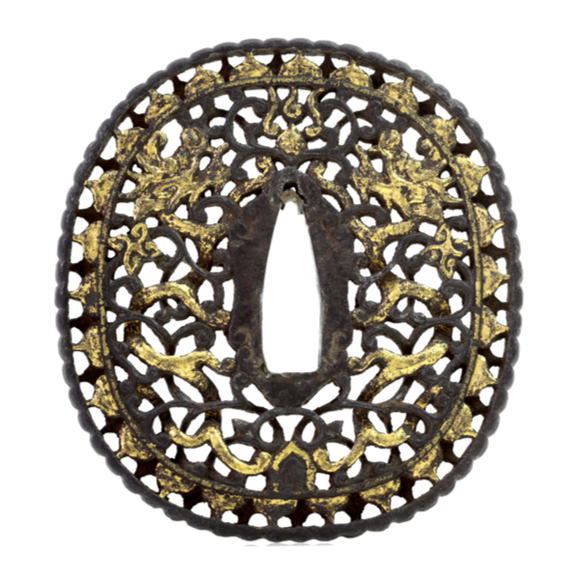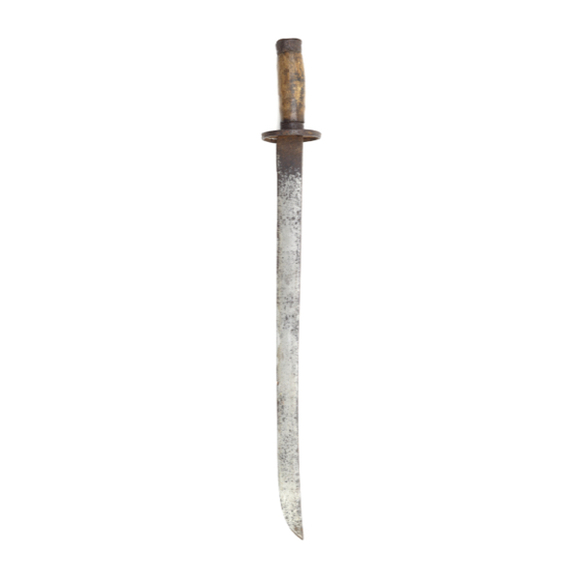Language: Mandarin Chinese
Source: Classical literature
Description
The biāo (鏢) is a Chinese type of javelin.
References
The Huángcháo Lǐqì Túshì (皇朝禮器圖式) or "Illustrated Regulations on the Ceremonial Paraphernalia of the Dynasty" of 1766 describes a weapon called a Lùyíng tiě tóu biāo (綠營鐵頭鏢) or "Green Standard Army Iron Headed Javelin".
Here is the entry:

"Green Standard Army Iron Head Javelin
According to:
Mao Yuanyi's TREATISE ON MILITARY PREPAREDNESS:1
“The small javelin weighs 4 liang. The head has a circumference of 6 fen.
When tossed [up in the air] they come down like rain."
The regulations of our dynasty:
Made of forged iron [as to produce steel].
Overall 3 chi 4 cun long. (Approx. 119 cm / 46.8 inch)
The blade is 4 cun long. (Approx. 14 cm / 5.5 inch)
It has a sharp point and two edges leading to barbs.
The shaft is 3 chi long. (Approx 105 cm / 41.3 inch)
Its circumference is 2 cun 7 fen. (Approx 9.4 cm or a diameter of 3.1 cm.)
It is made of wood and lacquered vermillion."
Note that the word used for biāo used has an additional dāo (刀) radical to the right. This text often uses composite characters that are slightly different from what is normally encountered. The Wubeizhi quote uses the more conventional 鏢.
The Mesny reference
Another reference to the use of throwing spears in China is by Mesny, a British adventurer who fought for the Qing imperial army in the late 19th century. He described a certain suōbiāo (梭鏢) or "shuttle dart" that despite its name is still little over 6 feet long. About its use, he says:
"The So-p'iao in Yün-nan and Kuei-chou is an elegant and most formidable weapon. It frequently consists of a foreign, triangular, or sword-like bayonet 15 to 18 in. long with a long socket in direct line with the blade and firmly fitted on to a 6-ft. shaft of the toughest kind of wood, ornamented with inlaid work, representing dragons and phoenixes in tinnum or pewter, melted into an ingraved clesign on the wood, polished and varnished with raw lacquer, jet black with white metallic design. The spear head, pointed as a needle and sharp as a razor, is frequently hidden in a bunch of pheasant's feathers, tied on to the socket of the blade or head, with or without one or more Turkey red calico rosettes.
A Yün-nan warrior, dressed with his copper sheated hat and paper armour, will attack half a dozen men armed with any other kind of weapon. The weapon appears to slip into a man's body with the greatest ease; sometimes through two men, one behind the other. The So-p'iao may also be thrown like a harpoon by Yün-nan warriors through a man fifty feet off.
It was with a suōbiāo that I defended myself at Chien Hsi Chou when attacked by scores of local soldiery armed with all sorts of weapons. I had fired off my revolver with telling effect, but had no time to reload, so availed myself of the So-p'iao of a fallen foe to clear the ground. Both ends answered my purpose on that occasion; the foot of the spear being iron shod with a pikehead and the enemy clad in ordinary garments." 2
Notes:
1. The 武備志 (Wubeizhi) was compiled in 1628 by Ming naval commander Mao Yuanyi. With over 10.000 pages, it is the most comprehensive Chinese treaty on military affairs ever written.
2. From "Mesny's Chinese Miscellany", January 16th, 1896. Page 332. Brought to my attention by David Leffman, author of the book about Mesny's exploits: The Mercenary Mandarin: How a British adventurer became a general in Qing-dynasty China.






